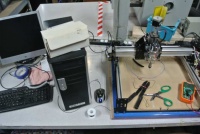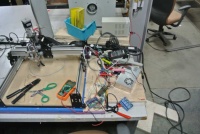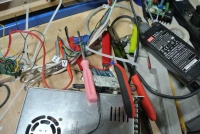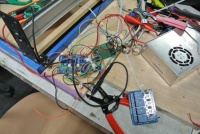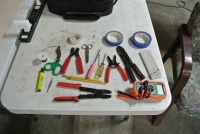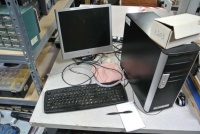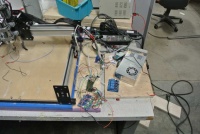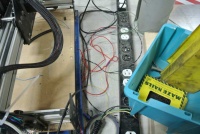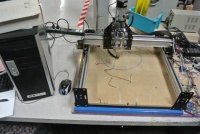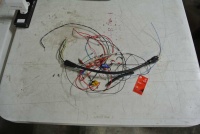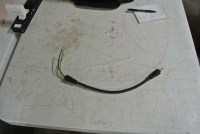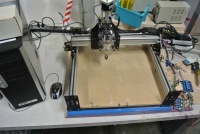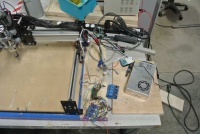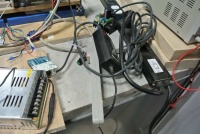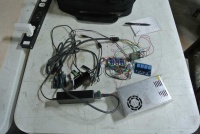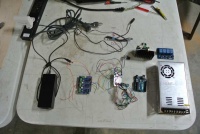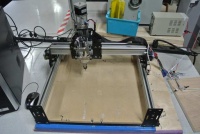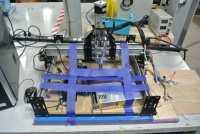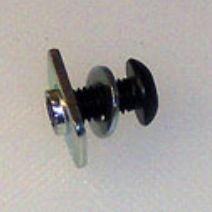Difference between revisions of "Shapeoko Repair Madness 2016"
| Line 54: | Line 54: | ||
* Wiring Patch Board | * Wiring Patch Board | ||
| + | And the Mechanical Beast | ||
| − | + | [[File:JACSRP-16.jpg | 200x200px]] | |
| − | + | ==Cleaning Up at the Stopping Point== | |
| + | Time ran out at this point on the diagnosis and repair adventure. Keeping with the advice to cleanup, the shapeoko table and parts was secured until next time. | ||
| − | + | [[File:JACSRP-17.jpg | 200x200px]] | |
| − | |||
| − | [[File:JACSRP-17.jpg]] | ||
= Preliminary List of Needs = | = Preliminary List of Needs = | ||
Revision as of 13:10, 4 July 2016
Contents
Survey the Field of Carnage
Death of the Shapeoko is just the beginning.
An important aspect of diagnosis is examination of the patient and the environment. In this case, a table was set aside in the hackerspace for the shapeoko. This table was meant for the "working" shapeoko and had little, if any room, for diagnostics and repair. When the shapeoko stop working, the table became the diagnostic and repair area. The following pictures show the state of the table after several attempts to diagnose and repair.
The tables was now unusable from a diagnostic and repair point of view. The next step is to clean up the area and select a suitable place to work. Rather than simply clearing off the table, I decided to remove items from the table until only the components of the shapeoko remained.
Tool Extraction
The tools below were all removed from the table. An important finding is that multiples of the same tool were found. This may indicate that multiples were needed at the same time but the tools in question and work to be performed do not support this. Instead, the multiple tools indicate multiple attempts to repair that were abandon, a single repair attempt were tools were recklessly left about or multiple repair actions in parallel. Regardless the reason, the abandoning of the tools on the table are signs of an incomplete and disorganized repair attempt. Hackerspaces can be chaotic, but a little organization when repairing equipment is of immeasurable value.
Here is how the table looks with tools removed. Evident in the photos is debris from the prior repair attempts or possible usage of the shapeoko before it stopped working.
Next step is to remove the debris.
Debris Removed
Below is a photo of the debris removed followed by a photo of the debris that can be used in the future by anyone. The majority of debris is wire clippings. This indicates that rewiring played heavily in the prior repair attempt. The different gauges and types of wire is common for hackerspace work. Tie-wrap pieces, wire insulation and simple trash make up most of the remaining debris. Cleaning the working space and especially the repair space can not be over emphasized. First thing to do when operating or repairing is clean up. When operating or repairing, periodic cleanups are important to ensure a smooth work flow.
What Remains is the Shapeoko
Inventorying The Assemblies
Below are photos of the shapeoko electronics as wired together and separated. From these assemblies a simple inventory of components will be made.
Assemblies are:
- Powerbrick for Steppers
- Stepper Controller Board (GSHIELD)
- Arduino UNO
- Power Supply for Spindle
- Relay Module
- Spindle Motor Controller
- Wiring Patch Board
And the Mechanical Beast
Cleaning Up at the Stopping Point
Time ran out at this point on the diagnosis and repair adventure. Keeping with the advice to cleanup, the shapeoko table and parts was secured until next time.
Preliminary List of Needs
Hardware
- Cables need to be labeled
- Cables need to be consistent gage and type
- Connectors need to be keyed (so they only fit together one way) and standardized
- Cable routing and securing needs to be redone
- If wire ties are used, they need to be trimmed
- Limit switches need to be securely mounted and wired
- Mounting hardware for table is missing an insertion nut
- Attach spindle to keyed connector
- Control boards need to be tested
- Stepper motors need to be tested
- Determine heat sink and cooling fan needs for control boards
- Determine whether control board interfaces with spindle
- Research alternatives for controllers and connectors
- Research alternatives for table materials & mounting
- Mount all power and control in a box with keyed cable connectors
- Install emergency stop button
photo of missing insertion nut
The insertion nut is the rectangular piece. M5 thread, 10mm x 15mm x 1.5mm
Stepper motor specs
Note: Stepper motors are Smart Automation SM42HT47-1684B. Specs are on this page.
Rated voltage = 2.8 V
Rated current = 1.68 A
Rated resistance = 1.65 Ohms
Rated inductance = 2.8 mH
possible e-stop solution
Note: Here's a block diagram for adding an emergency stop that looks like it may be a reasonable solution:
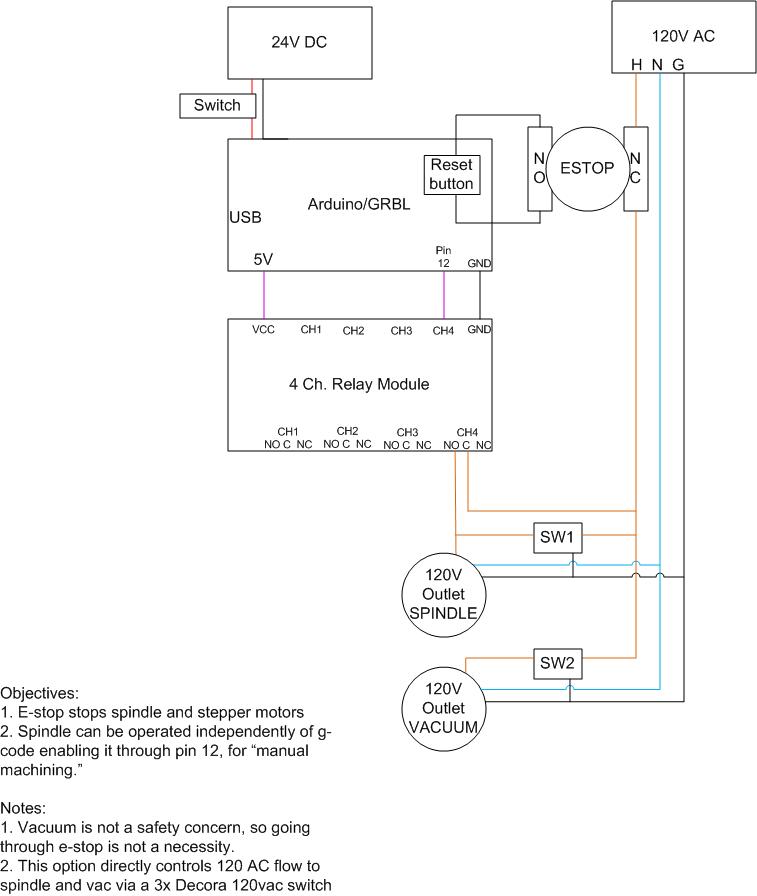
Software
Note: This section will be expanded when hardware issues are fixed.
- Determine whether min/max limits are stored
- Determine optimum software versions and document all settings
